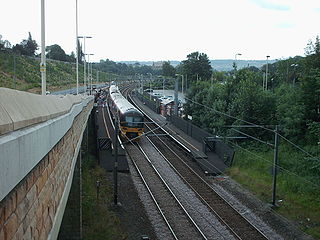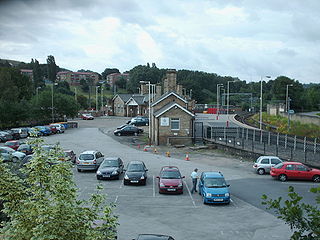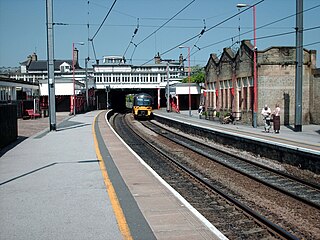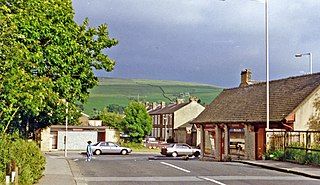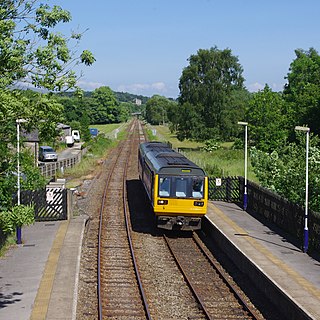Origin and construction
Before the Leeds and Bradford

In the early nineteenth century Bradford was the seat of the British woollen industry, and the greatest wool centre in the world. [1] The difficulty for Bradford was the poor state of transport links, although there had been a Bradford Canal from 1774. [2] Conveyance of raw materials in and finished goods out by animal power was slow and expensive. In 1840 the best passenger connection between Bradford and the railway network was at Brighouse, over 6 miles away: the demand was such that 40,000 passengers annually used the horse-drawn coach link in 1844. [3]
In the early part of the 1830s, the North Midland Railway was being planned; it was to run from Derby to Leeds; the merchants of Bradford asked the NMR company to extend to their town. However the directors of the NMR stated that building a 72-mile railway was already quite enough for them, and they declined. George Stephenson was the engineer of the NMR and advised the Bradford people that forming their own company for a line would be a practical way forward, but this advice was not acted upon. [1] The North Midland Railway opened throughout to Leeds on 1 July 1840. [4]
Formation of the Leeds and Bradford Railway
In reaction to the lack of progress, business interests in Bradford decided to form their own company, and they considered themselves fortunate to secure the services of George Stephenson as engineer, and of George Hudson as chairman. Their company's act of Parliament, the Leeds and Bradford Railway Act 1844, obtained royal assent on 4 July 1844. [1] Authorised share capital was £400,000. [5] This was achieved in the face of opposition from rival groups, one of which intended to use atmospheric traction to overcome the difficulty of the steep gradients their line would involve. As part of the Parliamentary process of gaining authorisation, the Leeds and Bradford promoters undertook to build extensions from Shipley to Keighley and from Bradford to Halifax. [3] [6] [7]
The authorising act also provided for a new Wellington Station in Leeds together with a connection to the North Midland Railway at Hunslet. [6]
Construction and opening
The line was 13 miles in length. The terrain was distinctly unfavourable to railway alignment, and Stephenson routed the line north out of Bradford to Shipley, turning east there. There was a 1,300 yard tunnel at Thackley. [1]
The Leeds and Bradford company built "a splendid new station" [1] at Wellington, in Leeds, the first in the centre of Leeds. Up until that time the Midland Railway had been using a terminus station at Hunslet Lane, some distance from the centre of Leeds and "in an unsuitable district", [1] but now was given the facility of using the Leeds and Bradford station, to the advantage of both companies. [8] [9]
On 30 May 1846 the contractor had substantially completed the construction of the line, and arranged a day excursion from Hunslet Junction, Leeds to Bradford for the directors and their friends. The formal opening took place on 30 June 1846, and the general opening to the public followed on 1 July 1846. There were no intermediate stations at first. The Bradford station was referred to as "Market Street" until its name was changed to Forster Square in 1924. [1] [5] [10] [11]
Public services began between Leeds and Bradford on 1 July 1846 with a regular hourly service, 18 trains per day in each direction on a weekday with five each way on Sundays. [6]
Formation of the Midland Railway
While the Bill for the Leeds and Bradford Railway was in Parliament, the Midland Railway was formed in 1844, by Act of 10 May 1844. It was created by the amalgamation of the North Midland Railway, the Birmingham and Derby Junction Railway, and the Midland Counties Railway. [12] Now the people of Bradford saw that they had another chance, and they petitioned the new Midland Railway to build a branch line to their town. Once again they were rebuffed, as the Midland board said that they "had enough irons in the fire" with the Nottingham to Lincoln line and the Syston to Peterborough line. [1]





